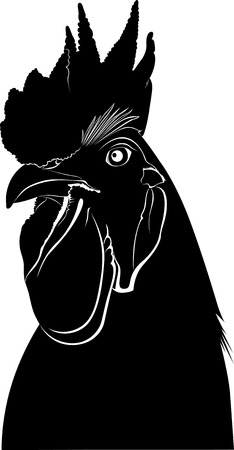1. Introduction: Why Eye Contact Matters in Bird Training
In American homes, birds have fluttered their way from decorative cages into the heart of family life, becoming beloved companions and cherished members of the household. Just like our dogs and cats, these feathered friends thrive on communication and trust—a connection that begins with something as simple yet profound as eye contact. While it might seem subtle, making eye contact with your bird is one of the first steps in building a mutual understanding. It signals respect, curiosity, and a willingness to bond on their terms. In this article, we’ll explore how eye contact shapes the unique relationship between humans and birds in American culture, why it’s so crucial for effective training, and how it can help you unlock new levels of companionship with your parrot, cockatiel, or any other bird sharing your home.
Understanding Bird Body Language Through Their Eyes
When it comes to training pet birds in the U.S., learning to read your feathered friend’s body language is just as important as the words you use or the treats you offer. Birds communicate a wealth of information through their eyes, posture, and subtle movements. Mastering these visual cues helps you build a stronger bond and respond appropriately during training sessions.
The Eyes: Windows to Your Bird’s Emotions
Birds express their feelings and intentions through their eyes in ways that can sometimes surprise new bird owners. For example, many parrots exhibit “eye pinning”—rapid dilation and contraction of the pupils—when they are excited, curious, or sometimes agitated. Soft, relaxed eyes often signal contentment, while wide, staring eyes can indicate fear or high alertness. Recognizing these signs will help you understand when your bird is comfortable with eye contact and when it might need some space.
Common Visual Cues in Pet Birds
| Visual Cue | What It Means | How to Respond |
|---|---|---|
| Eye Pinning | Excitement, curiosity, overstimulation, or agitation | Observe context; if paired with aggressive posture, give space |
| Soft Blinking | Relaxation and trust | Continue gentle interaction; reward calm behavior |
| Wide Eyes/Staring | Fear or alertness | Avoid sudden movements; offer comfort and distance if needed |
| Slow Blinking at You | Affection and calmness (especially common in cockatiels and budgies) | Return slow blinks; encourage bonding moments |
The Role of Posture and Other Visual Signals
In addition to eye signals, pay attention to your bird’s overall posture. Fluffed feathers often mean your bird is relaxed or preening but may also signal illness if combined with lethargy. Raised crest feathers in cockatoos or cockatiels can indicate excitement or alarm. Tucked wings and crouched bodies usually suggest fear or uncertainty. By combining what you see in their eyes with other body language cues, you gain a complete picture of your bird’s emotional state—a crucial step for positive, effective training.

3. Establishing Trust with Gentle Gaze
When it comes to bonding with your feathered companions, few things are as powerful as a calm, gentle gaze. In the world of domestic birds—whether you’re raising a chatty cockatiel in a cozy suburban home or tending to playful parakeets on a sunny porch—steady eye contact can be the bridge that builds trust. Unlike wild birds, our pet birds thrive on feeling secure and understood. By meeting their eyes softly and without sudden movements, you signal to your bird that you’re a safe presence. This is especially important in American homes where birds often become cherished family members, sharing in daily routines and holiday traditions. Over time, your bird will associate your steady gaze with comfort and predictability, making them more willing to step up, learn new tricks, or simply enjoy peaceful moments by your side. Just like a loyal dog curling at your feet or a cat purring in your lap, birds crave connection—and your eyes tell them they belong.
4. Avoiding the ‘Predator Stare’: Tips for Comfort
When working with your feathered friend, it’s essential to understand the fine line between a reassuring gaze and an intimidating stare. Birds are incredibly perceptive and can quickly pick up on subtle body language cues, especially through eye contact. In nature, direct and prolonged stares often signal a predator’s intent, making birds feel anxious or threatened. At home, you want to make sure your eye contact builds trust and comfort instead.
Understanding Bird Perception of Eye Contact
For many birds, eye contact from humans can be interpreted in several ways, depending on its intensity and context. Here’s a simple table to help distinguish between positive and negative types of eye contact:
| Type of Gaze | Description | Bird’s Likely Reaction |
|---|---|---|
| Soft, blinking gaze | Gentle eyes, occasional slow blinks, relaxed face | Calmness, curiosity, approach behavior |
| Direct, intense stare | Wide eyes, unblinking, leaning forward | Nervousness, retreat, defensive postures |
| Avoidant glance | Looking away frequently, not meeting bird’s eyes | Neutral or slightly anxious if overdone |
How to Use Eye Contact for Positive Training Outcomes
- Blink slowly when looking at your bird: This mimics natural bird behavior and signals safety.
- Avoid staring directly into their eyes for long periods: Instead, use soft focus or look slightly past them at times.
- Pair eye contact with gentle verbal encouragement: Speak softly while maintaining a relaxed expression.
- Watch for signs of discomfort: If your bird ruffles feathers or backs away, soften your gaze immediately.
- Create rituals of comfort: For example, establish a “good morning” glance paired with treats or kind words.
The Importance of Context and Consistency
Remember that every bird is unique. Some may become comfortable with more direct gazes over time as trust develops. Always observe your bird’s reactions and adjust accordingly—consistency is key in building positive associations. With patience and mindful eye contact, you’ll foster a relationship where your bird feels truly loved and secure in your presence.
5. Using Eye Contact as a Training Tool
Eye contact, when used thoughtfully, can be a powerful and gentle way to build trust and communication with your feathered friend. Many American bird owners have found that incorporating soft, intentional eye contact into daily routines can support positive behaviors and deepen the bond between human and bird. Below are some practical ways to use eye contact as a training tool in everyday life.
Incorporating Eye Contact in Daily Training
Start by sitting quietly with your bird in a familiar space. Allow your bird to approach you on their terms. When your bird looks at you, meet their gaze softly—avoid staring or making sudden movements. This gentle connection helps your bird feel seen and understood. During training sessions, pair short moments of eye contact with verbal praise or treats when your bird exhibits desired behaviors. Over time, your bird may learn that calm eye contact means good things are coming!
Positive Reinforcement with Eye Contact
Many American pet parents love using positive reinforcement methods, such as clicker training or favorite snacks, to encourage learning. Combine these tools with brief, reassuring eye contact. For example, after your bird steps onto your hand or performs a trick, offer a warm glance along with their reward. This signals approval and strengthens the trust between you both without overwhelming your feathered companion.
Making Playtime More Engaging
Playtime is another great opportunity to weave in gentle eye contact. While playing with toys or sharing a treat, look at your bird occasionally with relaxed eyes and a friendly expression. This lets your bird know you’re present and engaged. If your bird seems unsure or hesitant during play, soft eye contact can be soothing and encourage them to continue exploring.
Remember, every bird is unique. Watch for signs of comfort or stress—if your pet seems uneasy, give them space and try again later. With patience and consistency, gentle eye contact can become a trusted part of your daily routine, helping you nurture a happy, confident companion right in the heart of your own home.
6. Common Challenges and How to Overcome Them
If you’re a bird parent, you know that no two feathered friends are exactly alike—especially when it comes to training and communication. While eye contact can be a powerful tool for bonding and guiding your bird, it isn’t always as simple as gazing into those adorable eyes. Here are some common challenges you might face when using eye contact in bird training, along with practical tips for adapting your approach based on your bird’s unique personality.
Understanding Individual Comfort Levels
Some birds, especially those who are new to your home or have had negative past experiences, may find direct eye contact intimidating or even threatening. Parrots like cockatiels and conures, for instance, might interpret prolonged stares as predatory behavior at first.
Tip:
Start with brief glances rather than long stares. Watch for signs of discomfort such as fluffing feathers, backing away, or vocalizing anxiously. Respect their boundaries and let them set the pace as trust builds.
Overcoming Fear or Aggression
Sometimes, eye contact can trigger defensive reactions. Your bird might react by lunging, biting, or screaming if they feel threatened by your gaze.
Tip:
If this happens, try softening your expression and blinking slowly—a calm demeanor can reassure your bird. You can also angle your body slightly sideways to appear less imposing. Pair gentle eye contact with soothing words or favorite treats to create positive associations.
Dealing with Distractibility
Birds are naturally curious creatures. During training sessions, they may become distracted by movements outside the window or other pets in the room, making it difficult to maintain meaningful eye contact.
Tip:
Choose a quiet space free from distractions for your training time. Use clear verbal cues along with eye contact to help keep your bird focused on you. Consistency is key—short, frequent sessions work better than long ones.
Adapting to Personality Differences
Just like people, some birds are more outgoing while others tend to be shy or reserved. Bold parrots may seek out eye contact eagerly; shyer types need more patience and subtlety.
Tip:
Observe your bird’s comfort level closely and adjust accordingly. For bold birds, you can gradually increase the intensity of eye contact during games or commands. For shy birds, stick with softer looks and indirect attention until they feel safe enough to engage more directly.
Final Thoughts
No matter where you are in your training journey, remember that every bird has their own unique pace and preferences. By tuning into their reactions and being flexible with your methods, you’ll foster a trusting relationship built on respect—and plenty of shared moments gazing out at the backyard together.
7. Building a Harmonious Home: Stories from Multi-Pet Households
Across America, many families have discovered the magic of eye contact in creating peaceful coexistence among their beloved pets. From bustling suburban homes with flocks of parrots and playful Labradors to cozy country cabins where cats and cockatiels share sunbeams, eye contact has become an essential tool for harmony. Let’s take a look at real-life experiences from multi-pet households that have embraced this simple yet powerful form of communication.
The Johnson Family: A Lesson in Mutual Respect
In Oregon, the Johnsons share their farmhouse with two dogs, three rescue cats, and a talkative African Grey named Oliver. When Oliver first joined the family, he was timid around the other animals. By using gentle, reassuring eye contact—never staring or intimidating—the Johnsons taught both their bird and their dogs to respect each other’s space. Over time, even the cats learned to approach Oliver calmly when they caught his gentle gaze, leading to a household filled with trust instead of tension.
Harmony Through Consistent Cues
In Texas, the Garcia family’s love for animals is apparent: they have an Amazon parrot, a Golden Retriever, and two rabbits. Mrs. Garcia explains that making soft eye contact with her parrot while introducing him to the dog helped both pets feel secure during interactions. The dog learned not to lunge or bark when the parrot looked back calmly, while the parrot began associating calm eyes with safety and friendship. This mutual understanding blossomed into peaceful playtimes under the Texas sun.
The Power of Observant Parenting
New York’s Lee family credits eye contact as a cornerstone in raising their children and pets together—a feisty conure, an elderly tabby cat, and two energetic kids. By modeling respectful eye contact for their children—never staring down the bird but offering reassuring glances—the Lees fostered empathy and patience in every member of their home. Their story shows that mindful observation can ripple outwards, nurturing not just animal bonds but also compassionate kids.
Creating Everyday Moments of Connection
Whether it’s a quiet morning feeding chickens alongside curious pups or evening cuddles with parrots perched above purring cats, American families are finding that intentional eye contact lays the groundwork for understanding and peace in multi-pet homes. These stories remind us that building harmony isn’t about grand gestures—it’s about small moments of connection that help all creatures feel seen and respected under one roof.


